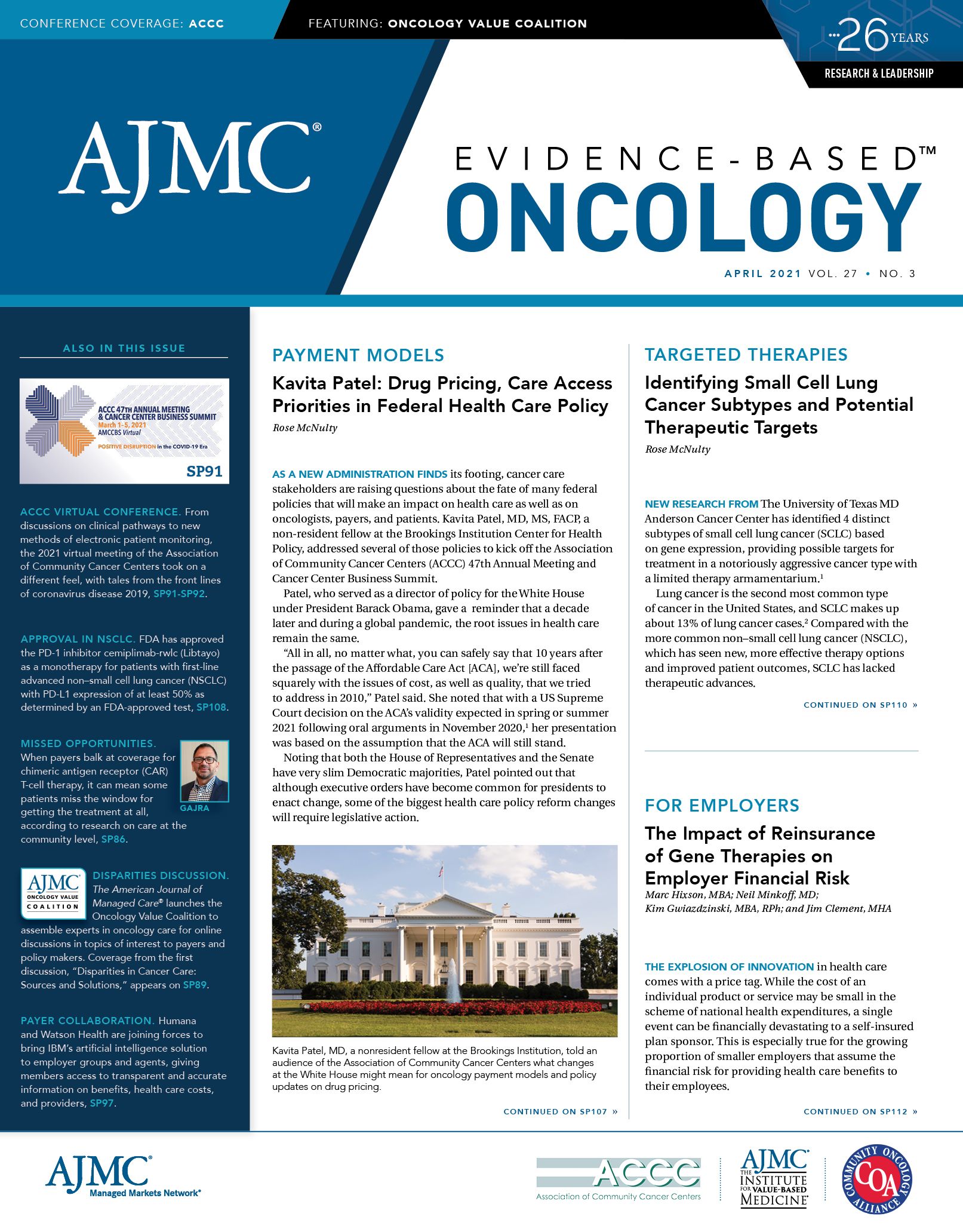- Center on Health Equity & Access
- Clinical
- Health Care Cost
- Health Care Delivery
- Insurance
- Policy
- Technology
- Value-Based Care
Path to Better Payment System to Be Clear Over Time
On my desks at home and at work, I keep copies of a 2012 internal medicine text written by several esteemed professors from my medical school. It is not there to remind me what they got right, but rather, to remind me how, in retrospect, so much of what we took as indisputable knowledge is now plainly wrong. As Joshua Y. Yang, MD, notes, few of his fellow medical students appreciated the prescience of their professor’s first-year prediction that, “Ninety percent of what you will learn over the next 4 years will be wrong in a couple of decades from now.”
This misalignment is especially true in the domain of cancer care. From the perspective of
someone practicing oncology in the late 1990s, there was no way to accurately predict how radically oncology and hematology would be transformed in the subsequent 2 decades by advances in genomic diagnostics/risk stratifi cation, targeted therapeutics, immuno-oncologic drugs, and gene-modifi ed therapeutics. My 2012 textbook serves as a reminder to remain humble and embrace a broader perspective when making sweeping pronouncements about the future of cancer care.
Instead, we must embrace this hyperdynamic period of innovation with the perspective that the
best way to create a system path that ensures these discoveries are delivered sustainably, equitably,
and effectively may only become clear in time through the persistence of those who are passionately engaged in bringing care to patients and families. There are more than 8000 new medications in development; up to 75% may represent new therapeutic classes. The failure to embrace this dizzying pace of change will exacerbate care disparities, produce more misaligned payment systems, and erect more barriers to life-saving, life-transforming care.
In 1984, CMS created the Prospective Payment System. Inasmuch as this represented an advance
from prior payment systems, it now seems antiquated in light of the dramatic advances in cancer
care. In 1984, 5-year relative cancer survival rates were only 52.74%. Since then, cancer survival rates
have risen by the greatest increments ever, fueled by the impact of novel targeted therapeutics and
immuno-oncological agents. Our payment systems have not kept up. CMS’ slow response in creating a payment model for chimeric antigen receptor T cells should not set the precedent for how our systems adapt to this era.. The profound differentiation of cancer care from other care types needs to be more effectively integrated into payment design models, lest existing care disparities grow in the face of misaligned models for payment.
Neither systemic inertia nor the quest for a “perfect” model of care payment should paralyze
the pace of progress, nor should it result in patients and families encountering additional barriers to
life-saving access in their respective cancer journeys. In this issue of Evidence-Based Oncology™,
we look forward, humbly, toward how our systems may more effectively evolve to become more patient-centered, more effective, more innovative, and more sustainable.
As we move forward through this unprecedented period in cancer care innovations, the quest for
grand strategies and elegant systems should not be our principal goals. The growing disparities in care access coupled with a growing portfolio of therapeutics require that we act now to ensure that patients, oncologist, and health systems can move with unfettered speed in bringing hope to those whose lives have been affected by a cancer diagnosis.
As long as we keep this as our truth north and continue to push past the systemic imperfections
and incorrect assumptions that stand in our way, the connected dots of a robust care delivery system will become increasingly clear in time. The first step is to humbly embrace this level of uncertainty—and to then move with speed.

Impact of Amivantamab-Lazertinib on EGFR, MET Resistance Alterations in NSCLC: Danny Nguyen, MD
September 15th 2025The combination of amivantamab and lazertinib in first-line non–small cell lung cancer (NSCLC) significantly reduces resistance mechanisms with implications for second-line treatment, said Danny Nguyen, MD, of City of Hope.
Read More
“Expanding Access Isn’t Just About Fairness—It’s About Building Better Treatments for Everyone”
February 16th 2025Regina Barragan-Carrillo, MD, a postdoctoral fellow at City of Hope Comprehensive Cancer Center, discussed findings that show 76% of renal cell carcinoma trials take place in wealthy countries, amid news that clinical trial access for the world's poor may become even more challenging.
Read More
Amid Debate Over Diversity, RCC Trials Still Struggle to Reflect Patient Populations
February 16th 2025Abstracts presented at the American Society of Clinical Oncology Genitourinary Cancers Symposium reflect the ongoing challenge with enrolling diverse patient populations in trials, despite stated goals.
Read More
